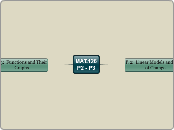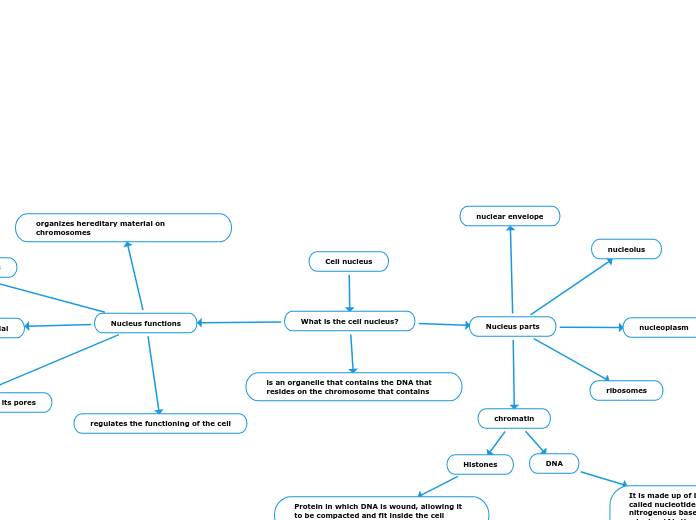MAT.126
P2 - P3
P.3: Functions and Their Graphs
Classify functions and recognize combinations of functions
Even and Odd Functions
The function y = f(x) is even if f(-x) = f(x) (the graph is symmetric wrt the y-axis)
The function y = f(x) is odd if f(-x) = -f(x) (the graph is symmetric wrt the origin)
Many functions are neither even nor odd.
NOTE: The only function symmetric wrt to the x-axis is f(x) = 0.
Zeros
Given a function f(x) for which f(a) = 0, we know that the point (a,0) is an x-intercept for the graph of f.
This number a is also known as a zero (or root) of the function f.
Zeros are the solutions to the equation f(x) = 0.
Algebra of Functions
Composite
Quotient
Product
Difference
Sum
Elementary Functions
Transcendental
Exponential and Logarithmic
Trigonometric
et al.
Tangent
Cosine
Sine
Algebraic
Rational
Radical
Polynomial
Leading Coefficient Test
Even degree polynomials:
If a_n > 0, both ends go to positive infinity
If a_n < 0, both ends go to negative infinity
Odd degree polynomials:
If a_n > 0, the left end goes down and the right end goes up
If a_n < 0, the left end goes up and the right end goes down
Degree
0th degree: f(x) = a (constant)
1st degree: f(x) = ax + b (linear)
2nd degree: f(x) = ax^2 + bx + c (quadratic)
3rd degree: f(x) = ax^3 + bx^2 + cx + d (cubic)
coefficients
leading coefficient
constant term
degree
Identify different types of transformations of functions
y = f(x): Original graph
y = f(x-c): Horizontal shift c units to the right
y = f(x+c): Horizontal shift c units to the left
y = f(x) - c: Vertical shift c units down
y = f(x) + c: Vertical shift c units up
y = -f(x): Reflection (about the x-axis)
y = f(-x): Reflection (about the y-axis)
y = -f(-x): Reflection (about the origin)
Sketch the graph of a function
8 Basic Functions
Identity: f(x) = x
Squaring: f(x) = x^2
Cubing: f(x) = x^3
Square root: f(x) = sqrt(x)
Absolute value: f(x) = |x|
Rational: f(x) = 1/x
Sine: f(x) = sin x
Cosine: f(x) = cos x
Vertical Line Test
Find the domain and range of a function
Types of Function Correspondence
A function from X to Y is one-to-one if to each y-value in the range there corresponds exactly one x-value in the domain.
A function from X to Y is onto if its range consists of all of Y.
Implicit domains
These you need to determine on your own. Remember that in order for a number to be in the domain of a function, there has to be a real-number image associated with the number.
Explicit domains
These are listed with the function. They are common in application problems.
Use function notation to represent and evaluate a function
Vocabulary
A relation between two sets X and Y is a set of ordered pairs, each of the form (x,y), where x is a member of X and y is a member of Y.
The independent variable is x and the independent variable is y.
The domain of the relation is X and the range of the relation is Y.
A function from X to Y is a relation between X and Y that has the property that any two ordered pairs with the same x-value also have the same y-value.
More formally: Let X and Y be sets of real numbers. A real-valued function f of a real variable x from X to Y is a correspondence that assigns to each number x in X exactly one number y in Y.
The domain of f is the set X. The number y is the image of x under f and is denoted by f(x), which is called the value of f at x. The range of f is a subset of Y and consists of all images of numbers in X.
A function is evaluated by replacing its independent variable with a specific value and then simplifying to find the value of the dependent value.
An explicit equation has been solved for y. An implicit equation has not been solved for y.
P.2: Linear Models and Rates of Change
Write equations of lines that are parallel or perpendicular to a given line
Perpendicular Lines
m_1 * m_2 = -1
or
m_1 = -1 / m_2
Calculator
Parallel Lines
m_1 = m_2
Sketch the graph of a linear equation in slope-intercept form
Horizontal Line
y = b
Vertical Line
x = a
Standard Form
Ax + By = D
General Form
Ax + By + C = 0
Slope-Intercept Form
y = mx + b
Interpret slope as a ratio or as a rate in a real-life application
A ratio occurs when both the x and y variables have the same units and the slope therefore has no units (they cancel).
A rate (or rate of change) occurs when the x and y variables have different units.
Typically these rates of change are average rates of change.
In either case, the result tells you the change in y per a 1 unit change in x.
Write the equation of a line with a given point and slope
Point-Slope Form
y - y_1 = m(x - x_1)
Find the slope of a line passing through two points
Slope formula: m = (y_2 - y_1)/(x_2 - x_1)









